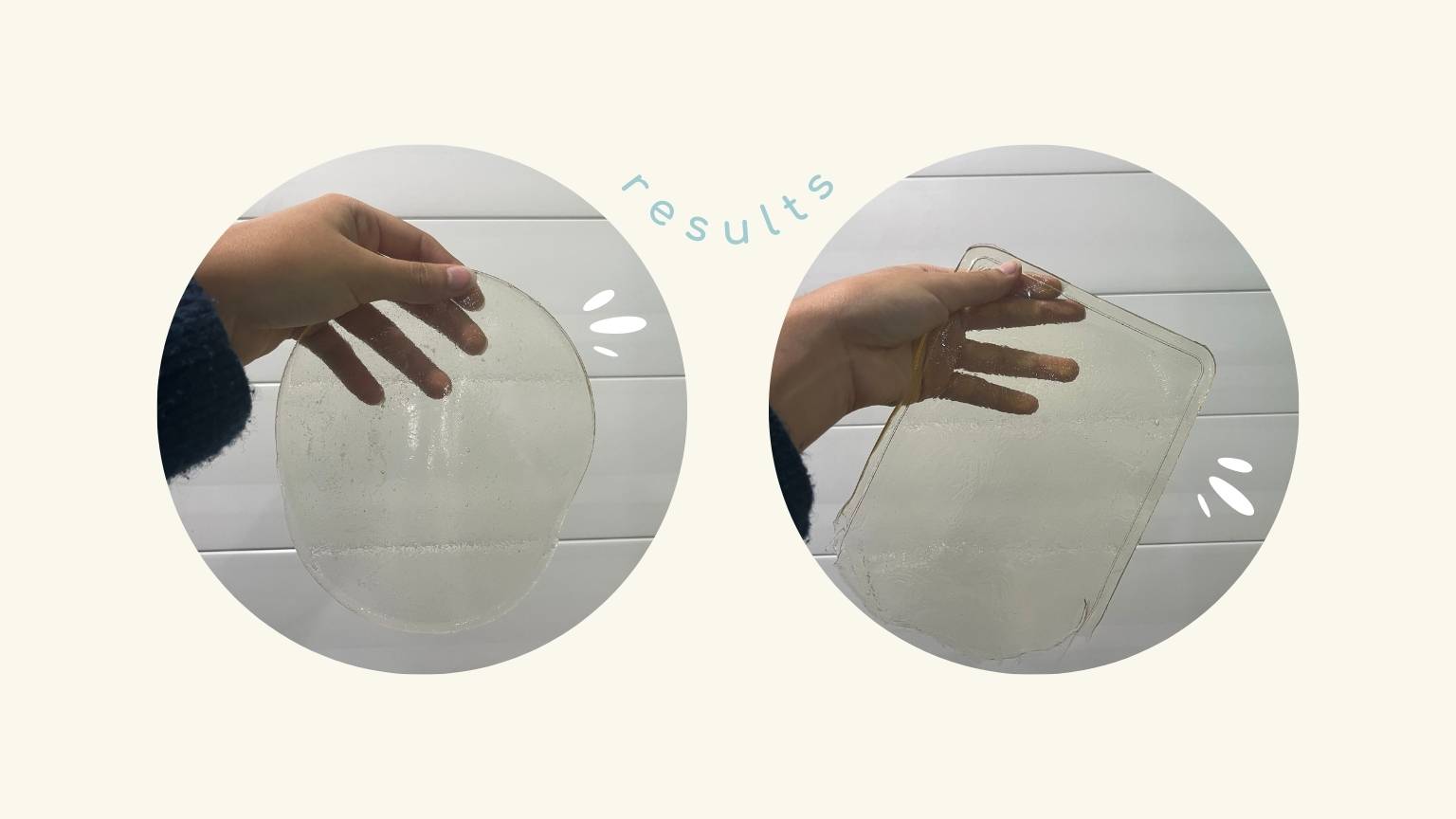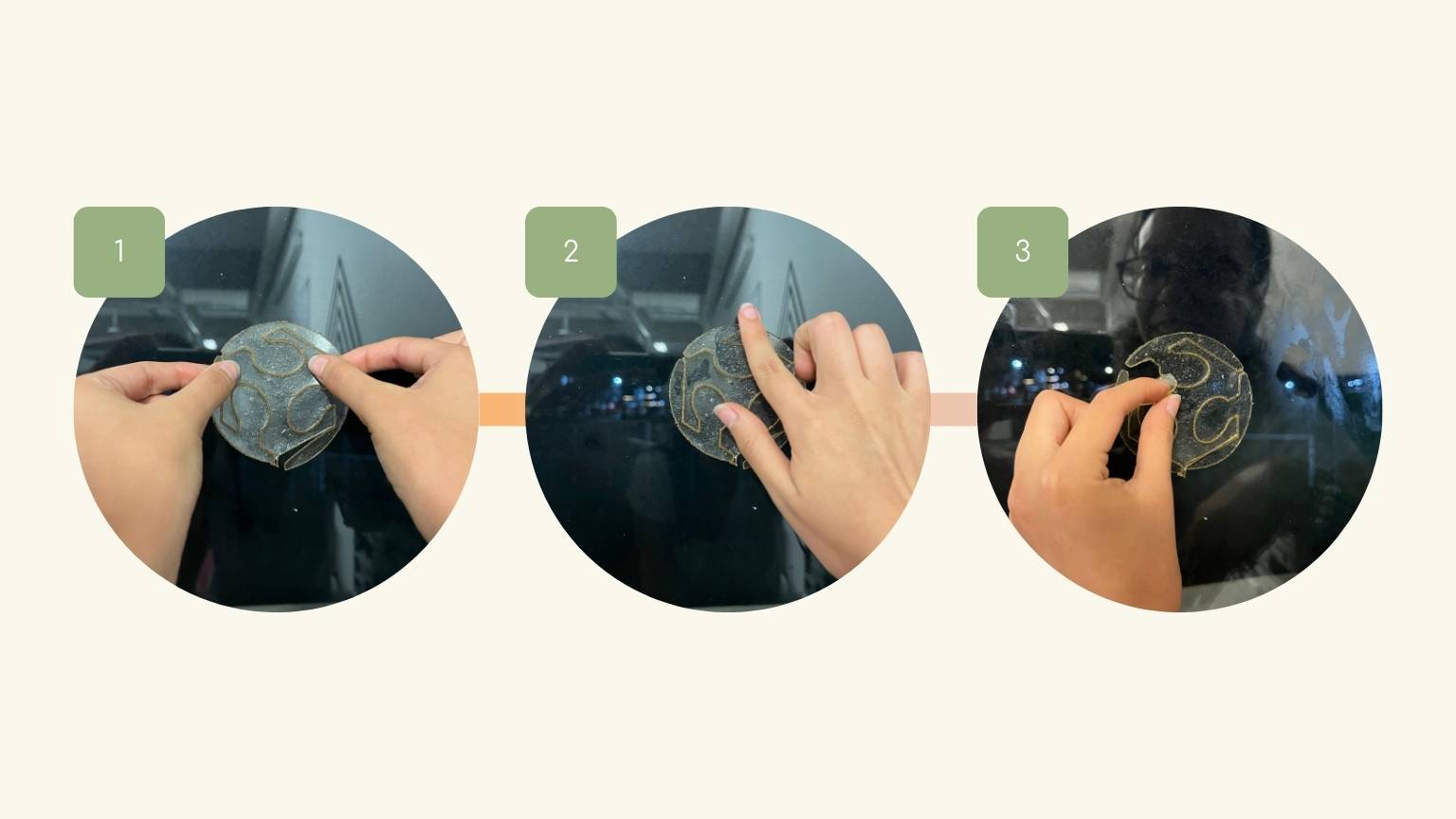16. Wildcard Week
… experiment week?
I tried something like that
Biomaterials
What are biomaterials?
According to the National Institute of Biomedical Imaging and Biogineering, a biomaterial is…
Any matter, surface, or construct that interacts with biological systems. Biomaterials can be derived from nature or synthesized in the laboratory using metallic components, polymers, ceramics, or composite materials.
Th creation of a biomaterial
materials:
So, for this I used:

- 12 ml of gricerol
- 250 ml of gricerol.
- 50 grof grenetin
How can I make it?
- First, mix the cold water and the grenetin powder in the pan without heating it. pan without heating.
- Gradually, the mixture becomes a pale yellow paste.
- Then start heating the mixture while stirring slowly to avoid lumps. avoid lumps.
- Once the preparation has become liquid and homogeneous, the glycerin is added to the mixture.
- Continue mixing and heating until you begin to see a whitish layer on the surface of the mixture.
- Note: If a transparent result is desired, this white foam should be completely removed with a spoon. If a transparent result is desired, this white foam should be completely removed with a spoon. Otherwise, it can be kept in the mixture; it will dry on the surface and create a fluffy part. You can also make more foam by stirring.
- Subsequently, pour the mixture into the prepared mold or surface. It is preferable to use a glass or aluminum mold for molding
the material because a wooden or cardboard surface can stick and will damage the desired shape. desired shape.
- Note: I added petroleum jelly to the containers I planned to use as a releasing agent to make the unmolding process simpler.






After 36 hrs of drying, these were the results:

So… what can you do with a biomaterial?
Actually, you could build anything from packaging to a cosmetic pad; the only restriction is your inventiveness. However, I believe it is critical to consider the material's physical properties in order to make use of and improve them effectively.
I did something basic, but it helped me comprehend the content and its breadth a bit more.
I made a window sticker… But how could I make it?
Lasser Cut
- First, I withdrew the biomaterial from the base, where I had placed it for sealing.
- I placed the bioplastic on a sacrificial board to prevent excessive discoloration and provide better cutting support.
- I put the material on the cutting plate.
- I altered the cutting settings.
- I changed the positioning of the content.
- The cut began.
- The specifications were incorrect since I burned the substance until it melted somewhat.
- I conducted another test with various settings.
- I failed again, since the cloth was not cut.
- So I conducted a third test.
- And the third time was the charm; the result was favorable.

Post Cut
- I removed the extra from the cut, which was not part of the sticker.
- Image B shows the form of the material after cutting:

- I placed and affixed the stickers to the window.
- I pressed to ensure adhesion.
- I removed the inner part of the sticker, which was not necessary.

The Result

Conclusion
Designing with biomaterials is a sustainable revolution that offers environmental benefits, such as reducing carbon footprints and promoting circularity, as well as opportunities to drive innovation across multiple industries with such versatile and functional materials. This approach not only contributes to the protection of the environment and human health but also opens up a world of possibilities for the development of safer and more efficient products. It is clear that the use of biomaterials is a crucial step towards a more sustainable and responsible future, where technology and nature coexist in harmony for the benefit of present and future generations.
